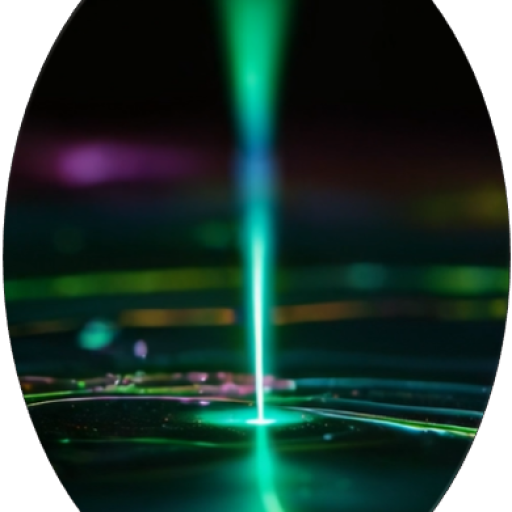Dimensional Mastery: From 0D Dots to Complex 3D Architectures
Direct-write nanomanufacturing bridges the gap between dimensions, enabling the creation of structures ranging from sub-nanometer 0D-dots to fully realized 3D-architectures. Under optimized conditions 1D lines with widths below 15 nm are achievable with remarkable precision. In 2D, nanoscale features with sub-nanometer accuracy and surface roughness below 1 nm enable the fabrication of ultraflat surfaces. For 3D, this technology regularly achieves feature sizes in the sub-50 nm regime and sub-20 nm under optimized conditions, unlocking applications in fields like plasmonics, quantum devices, or NEMS/MEMS. This dimensional versatility ensures precise control over every aspect of design.
Literature
Additive Manufacturing of Metal Structures at the Micrometer Scale; L. Hirt et al.; Adv. Mater. (2017), 29, 1604211.
Launching a New Dimension with 3D Magnetic Nanostructures; P. Fischer et al.; APL Mater. (2020), 8, 010701.
A Review on Direct-Write Nanoprinting of Functional 3D Structures with Focused Electron Beams; V. Reisecker, R. Winkler, H. Plank; Adv. Funct. Mater. (2024), 34, 2407567.
2025 Roadmap on 3D Nanomagnetism; G. Gubbiotti et al.; J. Phys.: Condens. Matter (2025), 37, 143502.
Fabrication of Scaffold-Based 3D Magnetic Nanowires for Domain Wall Applications; D. Sanz-Hernández et al.; Nanomaterials (2018), 8(7), 483.
True 3D Fabrication: Redefining Complexity Beyond Planar Limits
Direct-write technologies uniquely enable true 3D fabrication, allowing for the creation of complex free-standing geometries beyond planar constraints. These structures can serve as functional end-use components or as scaffolds for subsequent enhancements, such as coatings via CVD, ALD, or PVD, providing flexibility in design and material properties. With applications ranging from optical active chiral nanostructures to interconnected nanobridges, 3D nanoprinting is a cornerstone of this technology. By integrating nanoscale precision and material versatility, direct-write techniques transform the way we think about multi-dimensional fabrication.
Literature
3D Nanoprinting via Focused Electron Beams; R. Winkler et al.; J. Appl. Phys. (2019), 125, 210901.
Writing 3D Nanomagnets Using Focused Electron Beams; A. Fernández-Pacheco et al.; Materials (2020), 13(17), 3774.
Three-Dimensional Nanomagnetism; A. Fernández-Pacheco et al.; Nat. Commun. (2017), 8, 15756.
Review of Magnetic Nanostructures Grown by Focused Electron Beam Induced Deposition (FEBID); J.M. De Teresa et al.; J. Phys. D: App. Phys. (2016), 49, 243003.
A Review on Direct-Write Nanoprinting of Functional 3D Structures with Focused Electron Beams; V. Reisecker, R. Winkler, H. Plank; Adv. Funct. Mater. (2024), 34, 2407567.
Empowering Innovation: Accessible Tools for 3D Nanomanufacturing Design
Advanced design tools like 3BID, FEAST and Fib-o-Mat streamline the creation of intricate 3D structures, produced via electrons and ions, respectively. These tools reduce the entry barriers for 3D nanomanufacturing by providing accessible, freeware-based solutions for pattern generation and simulation (read more). Coupled with the inherent flexibility of direct-write methods, this enables the realization of both symmetrical and highly irregular geometries tailored to specific challenges. By combining precision, versatility, and accessible design workflows, the technology empowers researchers and industries alike to innovate with ease.
Literature
Layer-by-Layer Growth of Complex-Shaped Three-Dimensional Nanostructures with Focused Electron Beams; L. Skoric et al., Nano Lett. (2020), 20, 1, 184.
The Patterning Toolbox FIB-O-Mat: Exploiting the Full Potential of Focused Helium Ions for Nanofabrication; V. Deinhart et al.; Beilstein J. Nanotechnol. (2021), 12, 304.
3D Nanoprinting Replication Enhancement Using a Simulation-Informed Analytical Model for Electron Beam Exposure Dose Compensation; J.D. Fowlkes et al.; ACS Omega (2023), 8, 3, 3148.
Advances in Multiscale Modeling for Novel and Emerging Technologies; A.V. Verkhovtsev et al.; Eur. Phys. J. D (2021), 75, 207.
Continuum Models of Focused Electron Beam Induced Processing; M. Toth et al.; Beilstein J. Nanotechnol. (2015), 6, 1518.
